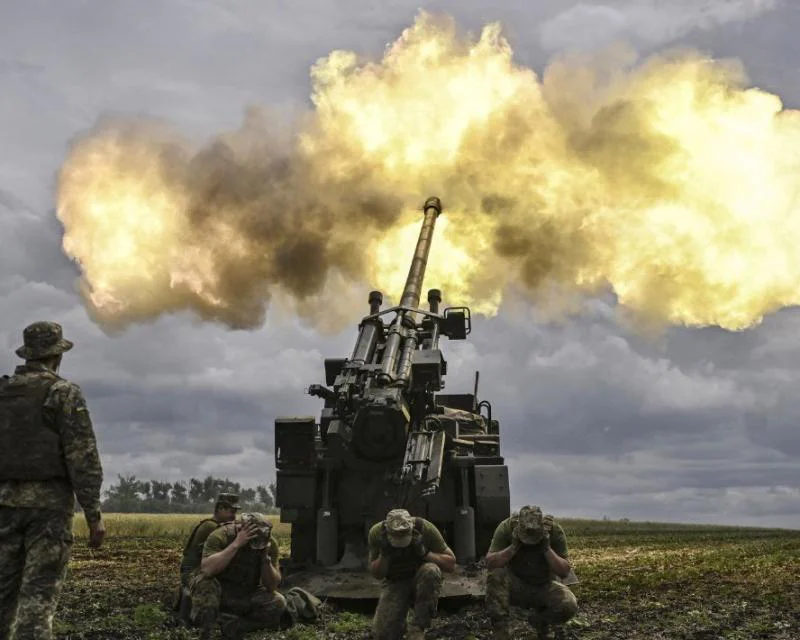Insurgency and civil war are both forms of internal conflict, but their scope, intensity, and objectives differ significantly. An insurgency is a protracted, typically low-intensity conflict involving irregular forces that contest the authority of the government. Insurgents employ guerrilla tactics, subversion, and intimidation to undermine the legitimacy and control of the state. Typically, insurgencies are marked by asymmetrical warfare, in which smaller units oppose a larger, more established force. They are frequently motivated by political, social, or economic grievances and seek to replace the current government or establish autonomy.
On the other hand, civil wars are characterised by large-scale, open, and sustained armed conflict between organised factions within a country. These factions, which can include state and non-state actors, compete for control of the government or territory. Civil wars are frequently characterised by increased levels of violence and devastation, as well as greater international intervention and repercussions. Insurgencies are typically smaller, asymmetric conflicts that seek to undermine state authority, whereas civil wars are larger, more symmetric confrontations between organised groups contending for power or territory.
What is Insurgency?
Insurgency is an irregular, non-traditional war in which a politically driven, often non-state group fights for a long time against the government or occupying power. Insurgencies are often asymmetric, meaning smaller, less-equipped troops use unorthodox methods to fight against a stronger, more established authority. Insurgents can be armed militias, guerrilla forces, or other groups that try to overthrow the government. The main goal of an insurgency is to undermine the legitimacy, authority, and control of the government or occupying power. This is done because of political, social, religious, or economic grievances. Insurgents want to change the way things are politically by using guerrilla warfare, rebellion, terrorism, and propaganda. They often take advantage of people’s dissatisfaction, local grievances, and bad governance to gain support from the people, which they need to stay afloat and be successful.
Insurgencies tend to be fluid and changeable, which makes them hard to stop. They can last for years or even decades because there are often times of violence and times when things are pretty calm. Insurgents use a wide range of strategies and methods, such as hit-and-run attacks, ambushes, improvised explosive devices (IEDs), political mobilisation, psychological warfare, and information operations. Counterinsurgency (COIN) operations are often a mix of military, police, and intelligence operations. They are done by governments or occupying forces to stop insurgent activities and get to the root of the conflict. A successful COIN strategy depends not only on good military and security operations but also on good government, economic growth, and winning the hearts and minds of the people who live there.
What is Civil War?
A civil war is a large-scale, long-lasting armed battle between organised groups in the same country. These groups can be both state and non-state actors. These groups often fight over the government, territory, or resources because they have different political, social, ethnic, or religious beliefs. Civil wars are marked by a lot of violence, a lot of destruction, and a lot of human suffering. They often cause a lot of people to leave their homes and cause refugee crises and humanitarian emergencies. Civil wars are usually less asymmetrical than insurgencies, meaning that the two sides have about the same amount of power and resources. Even though there may be some guerrilla warfare or asymmetric tactics in civil wars, they usually involve bigger, better-organised military forces using conventional warfare.
Various factors, including ideological disagreements, historical grudges, economic inequities, competition over resources, and resource scarcity, can spark civil wars. These wars are usually caused by bad leadership, state failure, or social divisions made worse by internal or external factors. Civil wars can have significant effects on the rest of the world because they can destabilise whole regions, cause ripple effects, and cause other countries to get involved. Civil wars often end through diplomatic efforts, peace talks, power-sharing agreements, or foreign peacekeeping missions. These things are done to bring about long-term stability and stop violence from happening again. For recovery and reconciliation to go well after a conflict, the root causes of the conflict must also be dealt with, and social cohesion must be encouraged.
Difference Between Insurgency and Civil War
There are significant qualitative and quantitative differences between insurgencies and civil wars. Motivated by political, social, or economic grievances, insurgencies see smaller, irregular groups adopting asymmetric methods to challenge a government’s authority. The purpose is to make the state less reliable and effective. However, civil wars include organised factions within a country engaging in large-scale, protracted military warfare to establish or reestablish authority over the country’s government or territory. When compared to conventional battles, civil wars are more asymmetrical, destructive, and far-reaching on a global scale. The key distinctions between insurgency and civil war are discussed in the sections below.
Magnitude and Ferocity
While civil wars typically entail larger, more organised armies and higher levels of murder and damage, insurgencies are usually characterised by smaller-scale, low-intensity confrontations.
Asymmetry
During an insurgency, weaker, irregular forces challenge a stronger, established authority, resulting in asymmetric warfare. However, civil wars are typically more balanced, with both sides having roughly the same strength and resources.
Objectives
Insurgents seek political change or independence; hence, they try destabilising the state or an occupying power’s authority. Civil wars occur when competing groups attempt to seize power in the government, an area, or the nation’s resources.
Tactics
Insurgents take advantage of popular discontent and poor administration to further their ends through guerilla warfare, sabotage, terrorism, and propaganda. While guerilla and asymmetric tactics are not unheard of in civil wars, conventional combat and battles between organised military groups are more common.
Duration
An insurgency is a long-lasting war that typically lasts for years or even decades, including violent and peaceful phases. Although civil wars can last for a wide range of time spans, they are typically more protracted and ongoing.
International involvement
Regional destabilisation, refugee crises, and international involvement are all examples of the far-reaching global effects of civil wars. While insurgencies may garner international attention or lead to military involvement, their effects are mostly limited to the immediate area.







